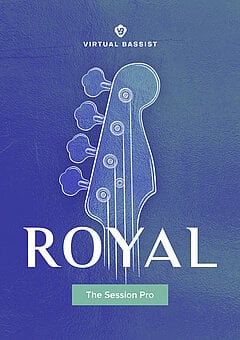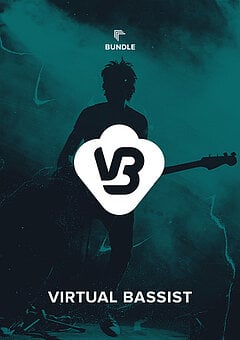Learn How to Create Bass Lines that Stick
An abbreviated guide to writing the perfect bass line for any song, genre, and instrument, even if you’ve never written one before.
MAY 5TH, 2021
Bass lines support melody, harmony, and rhythm in virtually every genre of music from classical to R&B, and it’s nearly impossible to write a great song without paying attention to what you assign to a bassist or virtual bass plugin. Whether you’re working with a synth bass, virtual bass player or are completely new to the process, this article should have you writing fun and compelling bass lines in very little time.
What are Bass Lines?
A bass line is the series of low notes, generally staying below the rest of the instruments. If you’re not tracking a musician live, the easiest way to get a bass line into a song is to use a bass player VST like the brand new Virtual Bassist 2, which is especially helpful if you’re still learning bass line essentials.
Bass lines can come from an acoustic/upright, electric, or synth bass source, and which you choose depends largely on genre (for example, upright for jazz, electric for rock, and synth for EDM or Electronic Dance Music).
The simplest way to construct one is to play the root note of each chord. For many genres this approach would be far too boring, but for some varieties of EDM it might be sufficient, particularly if there are a lot of other things going on in the song.
Where to Start?
In most genres the bass line has to move to notes other than the root note of the chord to keep things interesting. Which begs the question: Which notes, exactly?
Understanding Key and Scale
It’s important to have a solid understanding of keys and scales, because you’ll typically want to use the notes available to you in the scale. Check out the video below, especially if you consider yourself an absolute novice.
Once you have a solid understanding of the key you’re writing in, here are a few ideas that will help you quickly write bass lines, regardless of whether you have virtual bassist software to assist you:
- Go up or down the scale
- Arpeggios (playing the first, third, and fifth notes of the current scale and/or chord)
- “Vamp” on one note (play it repeatedly a measure or longer)
- Alternate between octaves--play a note, then play the same note an octave below, and repeat (or vice versa)
- Vary the length of each bass note (to add extra character and punch, “choke” the note occasionally by stopping it shortly after it’s played as opposed to allowing it to ring)
Finding the Right Rhythm
If you want to learn about rhythm, study drummers. The drummer in any band is usually the rhythmic anchor that all the other instrumentalists look to for guidance. While rhythm is a diverse and complex topic, mimicking specific parts of a percussion groove is a great place to start. Of course, it’s easy to go overboard, but this is an excellent way to get your creative juices flowing.
The longer but more holistic approach is to listen to as many genres of music as you can, study the bass lines of songs by your favorite artists, and incorporate those into your music. Some of your best music will likely be directly inspired by artists with a completely different style than you!
When you hear a bass line you love to play, attempt to play it yourself using bass guitar plugins that allow you to create a sound similar to the original version. If you’re looking to compare bass plugins based on playing style, you will find a plethora of reviews of the top bass VSTs including Virtual Bassist 2 on the web.
Common Bass Line-Styles
For a quick primer to writing great bass lines, check out this video by Rick Beato. It’s specific to rock, but many of the principles in each song can be transferred to other genres. If you want to get a taste of how to implement bass lines like the ones in the video into your own songs, download the bass guitar VST Virtual Bassist ROYAL 2 and experiment.
You can hold down the root note of a chord and experiment by hitting the notes under “Common Phrases” and “Style Phrases.” If you have fun with different note combinations for a while, you’ll notice that you can actually get a pretty close approximation of some of the examples in Rick’s video. This is a great way to get a feel for writing them yourself, and if you decide to get a license for VB 2, you can use it directly in future songs you write, saving you a lot of time and making the process much more enjoyable!
One of the most common styles in EDM, especially at faster tempos, is the off-beat bass. The kick drum often plays a 4-to-the-floor driving beat, and every bass note is delayed from the kick by an eighth note. You can find a few examples of this style here.
By contrast, a staple of jazz is the walking bass line, in which quarter notes are played in sequence, moving up or down the scale to the root note of the next chord, as shown in these examples.
There are also a metal bass VST (Rowdy) and acoustic bass VST (Mellow) available. It’s not necessary to use them, but if writing bass lines in multiple different genres is relatively new to you, these “automatic bass players” are a fantastic way to get your feet wet with bass line writing.
If nothing else, remember this: the bass lines that stick in your ears are catchy, distinctive, and aren’t afraid to break a few rules as long as they groove!
Stay up to date
Sign up and we’ll send you an e-mail with product news and helpful stuff every now and then. You may unsubscribe at any time.
Defy Limits
We develop software solutions that enable people to create, consume and interact with music.



